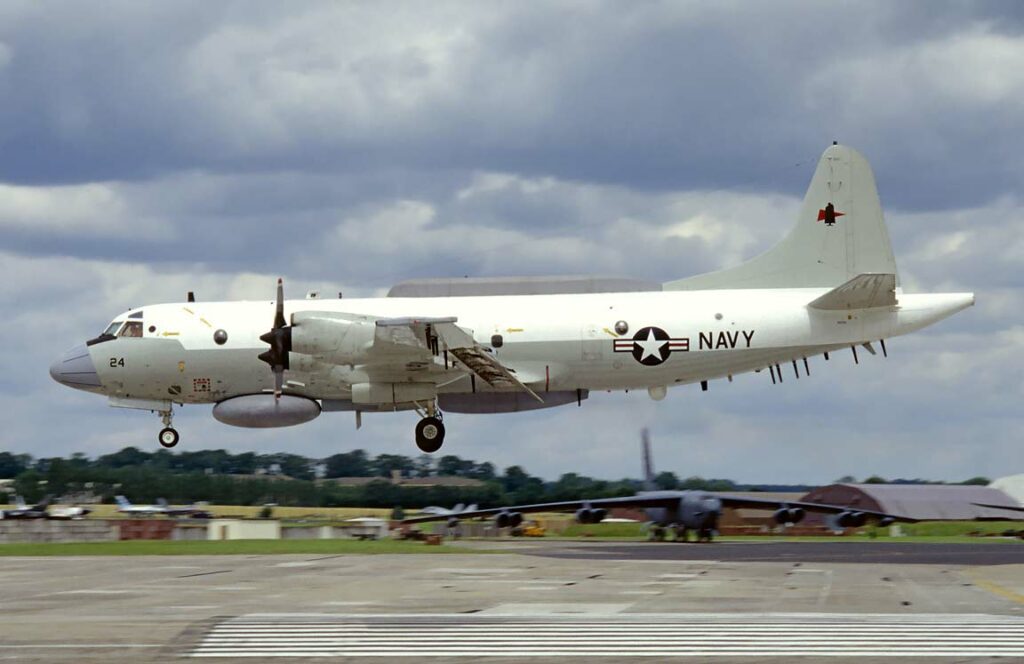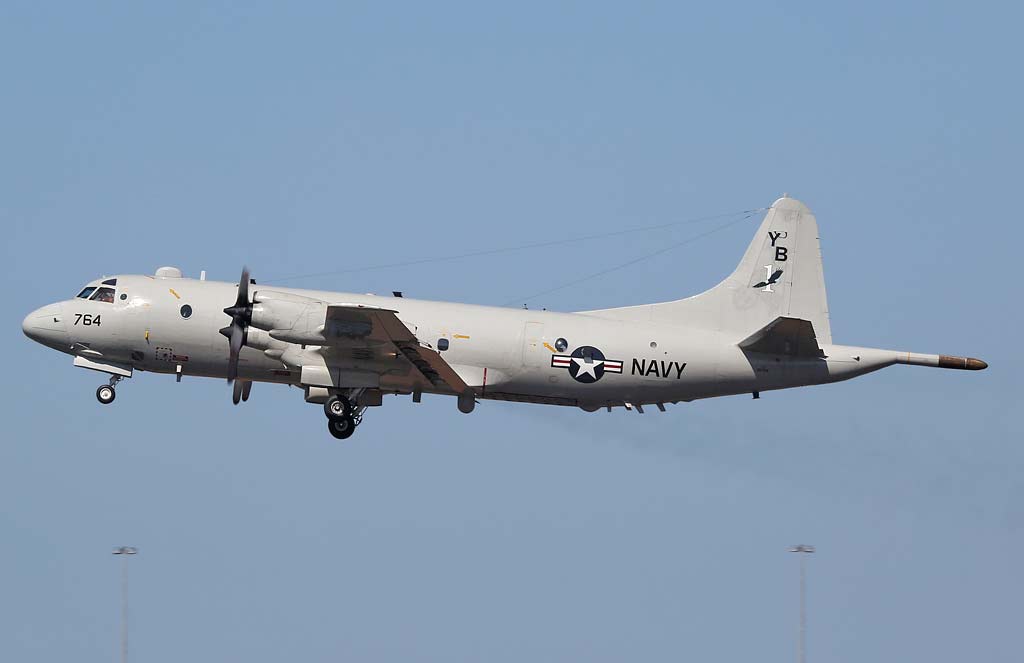The Lockheed Martin P-3 Orion is a maritime patrol aircraft, equipped for anti-submarine warfare, surveillance, and reconnaissance.
In Brief
The Lockheed Martin P-3 Orion is a four-engine, turboprop anti-submarine and maritime surveillance aircraft. Introduced in the 1960s, it has served as the cornerstone of naval aviation for multiple countries around the globe. The P-3 Orion is powered by four Allison T56-A-14 turboprop engines, enabling long-duration missions over vast oceanic expanses. It is equipped with advanced sensors and systems for maritime patrol, anti-surface, and anti-submarine warfare, including magnetic anomaly detectors, sonobuoys, and radar. The aircraft’s design facilitates a blend of high endurance, versatility, and capability in maritime surveillance, making it an invaluable asset in ensuring naval superiority and security.

History of the Development of the Lockheed Martin P-3 Orion
In the late 1950s, as the Cold War intensified, the need for an advanced maritime patrol aircraft became apparent to counter the threat of Soviet submarines. The U.S. Navy sought a replacement for the aging P-2 Neptune, leading to the development of the P-3 Orion. Lockheed’s proposal, based on its L-188 Electra commercial airliner, was selected for its long-range, high-endurance capabilities, and the program was launched.
The P-3 Orion first flew on April 15, 1962, showcasing a design optimized for maritime surveillance and anti-submarine warfare. The aircraft was equipped with state-of-the-art sensors and weapons systems, capable of detecting and engaging enemy submarines at great distances. Its development was a direct response to the strategic demands of the Cold War, with the objective of maintaining superiority in naval warfare.
Design of the Lockheed Martin P-3 Orion
The design of the P-3 Orion is characterized by its distinctive high-wing configuration, which provides stability and an excellent vantage point for surveillance and reconnaissance missions. The aircraft’s four Allison T56-A-14 turboprop engines offer a perfect balance between speed and range, allowing it to patrol vast oceanic areas for extended periods.
One of the P-3’s major advantages is its sophisticated suite of sensors, including sonobuoys, magnetic anomaly detectors, and advanced radar systems, which enable it to detect and track submarines beneath the surface of the ocean. However, the aircraft’s age and the wear from long-duration missions have posed challenges, leading to ongoing modernization efforts to extend its service life and enhance capabilities.
Performance of the Lockheed Martin P-3 Orion
With a maximum speed of 411 knots (473 mph, 761 km/h) and a range of over 2,380 nautical miles (4,400 km), the P-3 Orion is capable of reaching and monitoring vast maritime areas. Its endurance and ability to fly at low altitudes for extended periods make it particularly effective in anti-submarine warfare and surface surveillance roles.
Compared to its contemporaries and successors, such as the Boeing P-8 Poseidon, the P-3 Orion holds its ground due to its robust performance in low-altitude, long-duration missions. Its combination of speed, range, and payload flexibility has made it a valuable asset in a variety of maritime patrol and reconnaissance missions.
Variants of the Lockheed Martin P-3 Orion
Over its service life, the P-3 Orion has seen numerous variants, each designed to enhance specific capabilities. Notable variants include the P-3A/B/C models, with the P-3C being the most advanced and widely used, featuring improved avionics and sensor systems. Specialized versions, such as the EP-3E ARIES II, have been developed for electronic signals intelligence (ELINT) missions.

Military Use and Combat of the Lockheed Martin P-3 Orion
The P-3 Orion has played a crucial role in numerous military operations, from tracking Soviet submarines during the Cold War to participating in anti-piracy operations and supporting global counter-terrorism efforts. Its armament capabilities, including torpedoes, mines, and depth charges, have made it a formidable platform for anti-submarine and anti-surface warfare.
The aircraft has been used extensively in NATO operations, providing surveillance and reconnaissance support, and has been sold to allies, enhancing global maritime security cooperation. Despite the introduction of newer platforms like the P-8 Poseidon, the P-3 Orion remains in service with several countries, testament to its enduring value and versatility.
The Lockheed Martin P-3 Orion exemplifies the critical role of maritime patrol and reconnaissance aircraft in modern naval warfare. Its design, performance, and adaptability have ensured its place as a cornerstone of maritime security for over five decades. As it gradually transitions to support roles in favor of next-generation platforms, the P-3’s legacy as a versatile and reliable workhorse of the seas continues to influence the development of future maritime patrol aircraft.
Back to the Special Aircraft section